Embracing Flexibility in CTE Classroom Design
For the third time, BKV was involved with the EDSpaces conference with the focus of this year’s classroom concept being “Embracing Flexibility in CTE Classrooms.”
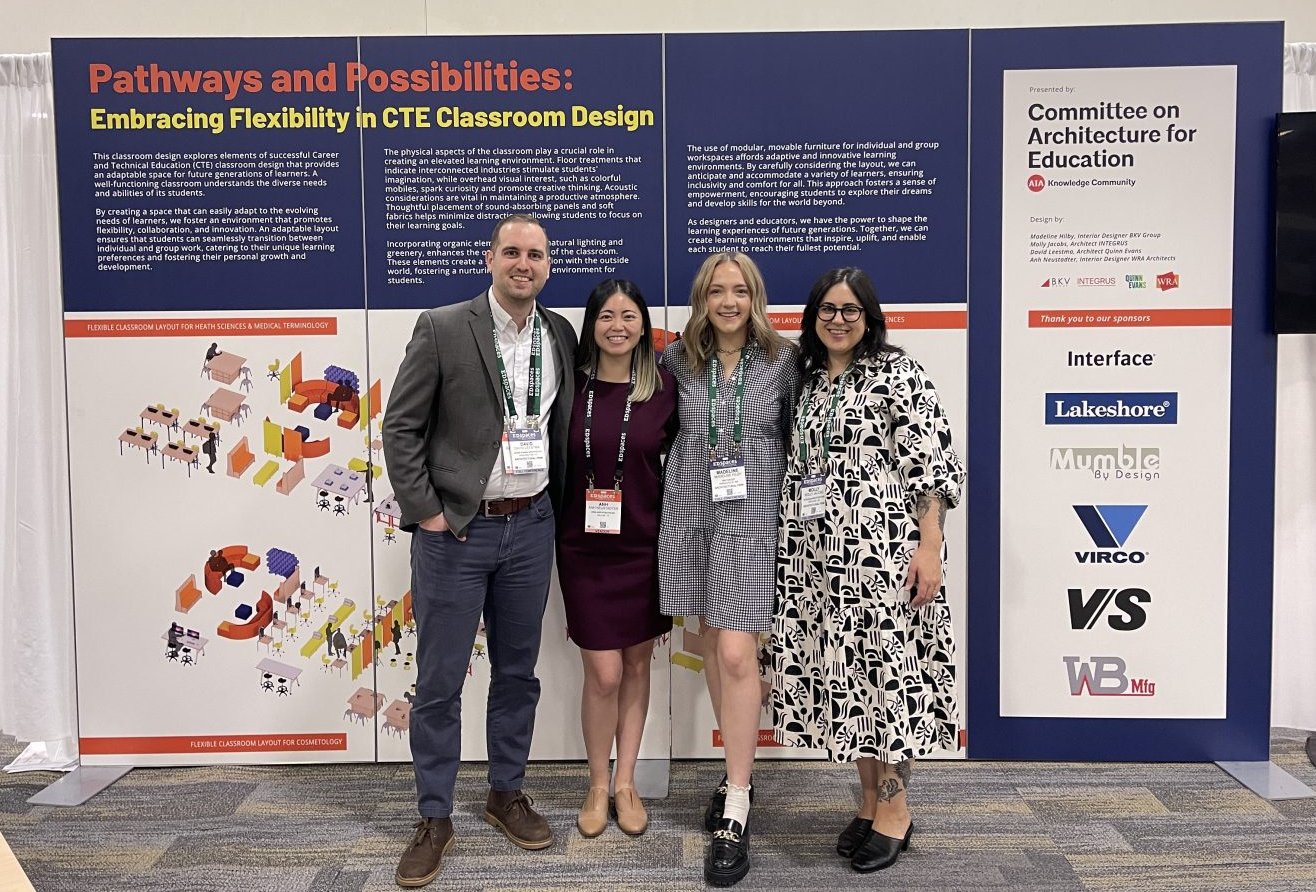
EDSpaces 2023 took place in North Carolina, and spearheading BKV’s classroom concept was Interior Designer, Madeline Hilby, who collaborated on the design with Molly Jacobs (Integrus), Anh Neustadter (WRA Architects), and David Leestma (Quinn Evans).
To begin, the team learned more about CTE and how it is a learning pathway that integrates core academic knowledge with technical and occupational knowledge to provide students with a pathway to postsecondary education and careers. These programs have a wide range of offerings, from Forensic Technology, Game Development, Cosmetology, & Culinary Arts. While researching CTE programs, the team found that 98% of public-school districts offer CTE programs, and 77% of these high school students are participating in a CTE program (source: U.S Dept of Education).
Through the team’s research of precedent CTE classrooms across the country, we found that key elements to focus on in the design were flexible social spaces, a balance of individual and group study spaces, ceiling elements for wayfinding, and innovative research space. The team concluded that CTE classroom designs should cater to diverse student needs by promoting flexibility and collaboration, and the classroom experience should emphasize the importance of inclusive layouts to enhance the learning environment and empower students for the future.
While designing, the team also heavily considered that many high schools offering these programs do not have the means to provide a separate classroom for each CTE program. This played a major role in the flexibility of each furniture piece the team selected, in addition to the overall versatility of the furniture layout. Our end goal was that the design should allow for the classroom to be reconfigured for as many different CTE uses as possible.
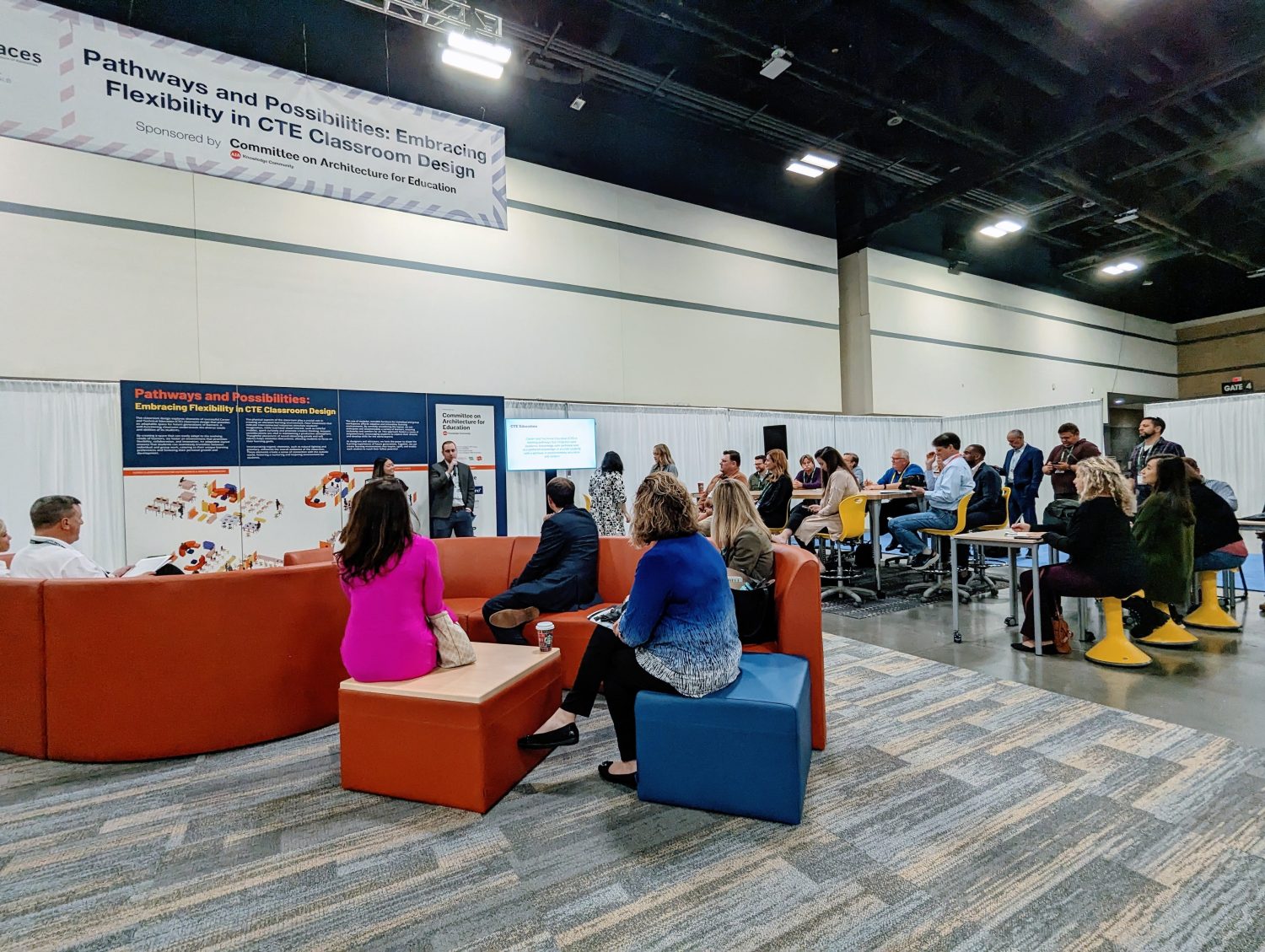

At the conference, EDspaces provided the team with a 30 foot x 50 foot space to design within. Not only would the space be used for the exhibit, but it would also be used as a presentation area for other speakers. After considering the research we gathered, working through how we wanted the space to function, space planning, and meeting with different furniture procurement manufacturers, we concluded on a final layout. This final classroom was split into three major sections:
- A lounge and presentation area
- A makerspace
- A flexible workspace for groups and individuals.
All three would be packaged in a color scheme evoking feelings of joy and rejuvenation in learning, with the featured furniture not only being adaptable for the overall space, but for the individual users as well. Our hopes were that these pieces would truly impact how students learn, and how they study in the future. Some pieces we selected with this in mind were the height adjustable desks, white board tables, lockable workstations, lounge pieces with power, and ensuring that almost all the furniture had lockable casters, allowing for effortless reconfiguration.
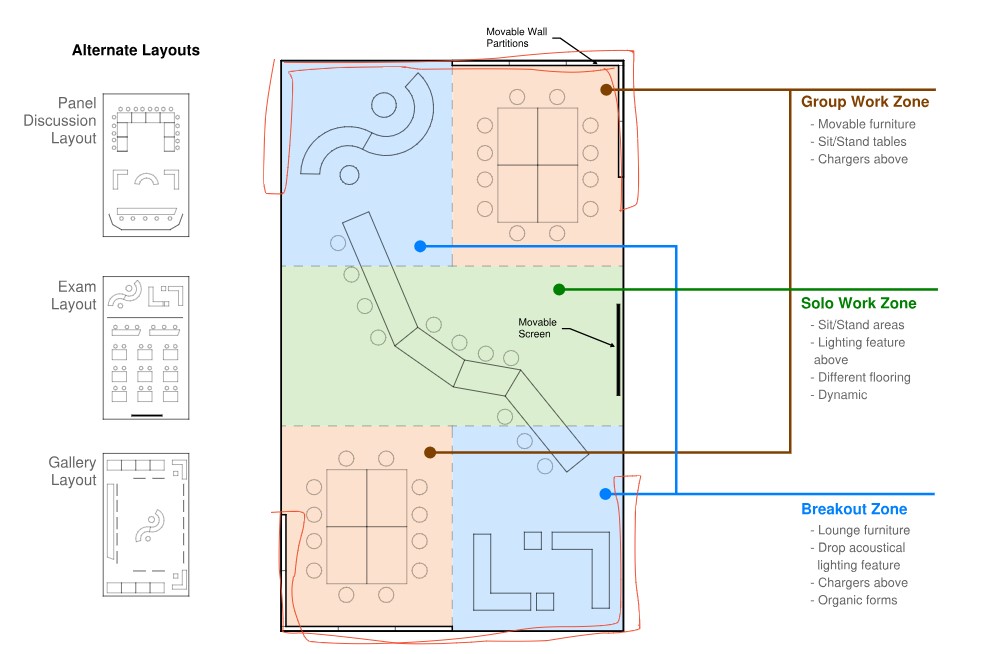
The Lounge & Presentation Area
The Lounge & Presentation area is in the center of the space, and mainly functions as a flexible social space within the classroom. It includes many modular furniture pieces, acoustical room dividers, and is anchored by acoustical ceiling baffles for wayfinding. Another important element is the carpet tiles used as large area rugs for additional sound absorption, and to ground the furniture layouts.
The Makerspace
To the left of the lounge area is the makerspace. This includes adjustable desks, white board tables for innovative collaboration, butcher block workstations with lockable storage, and acoustic dividers to help separate the spaces.
Flexible Workspace
The final area is a flexible workspace for groups and individuals with the layout being reconfigured with four different CTE topics in mind. Each team member picked a CTE topic, researched it, and redesigned the space with the same furniture pieces. This helped emphasize the true potential and flexibility of the classroom.
Overall Classroom Layout
The final classroom concept strongly focuses on how each individual learns differently, with the flexible overall concept providing a sense of inclusion to accommodate a wide range of CTE students.
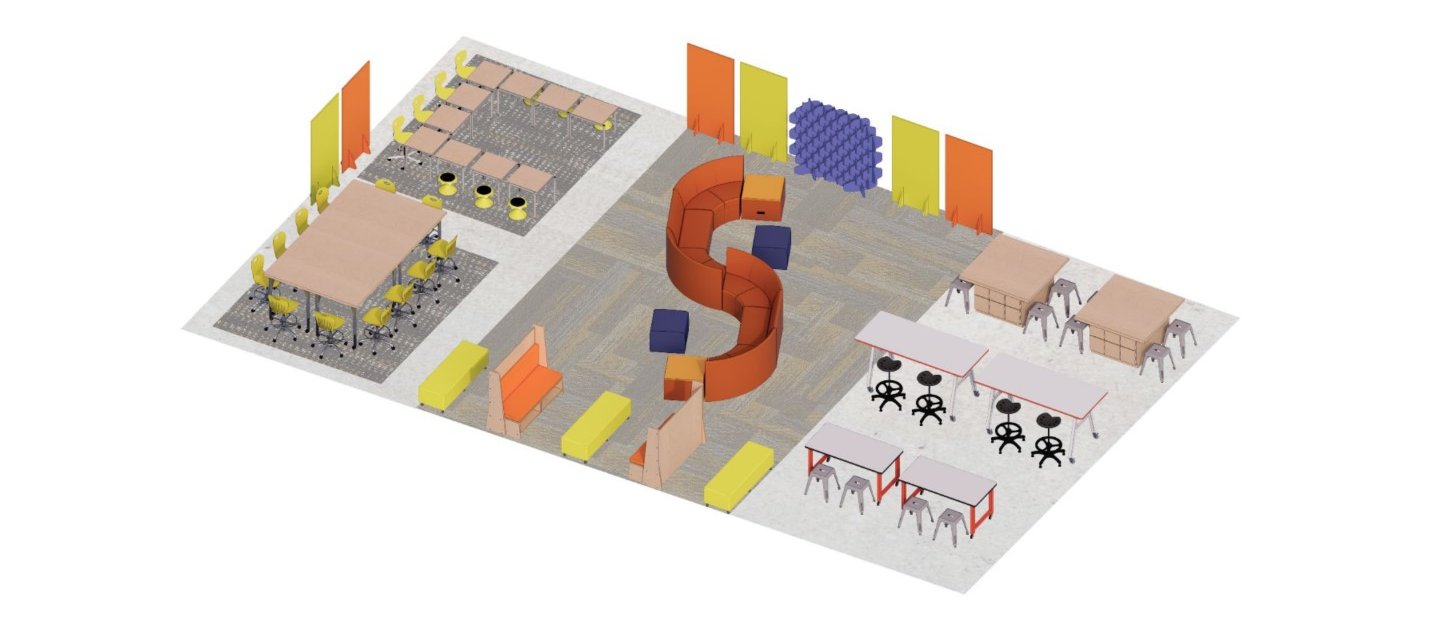
Flexible CTE Classroom Layouts
Health & Medical Sciences Layout
A Health & Medical Sciences CTE program is typically very research-oriented. This was a key factor in the successful layout for this layout. It features two zones for research; one for general research, and another geared specifically towards lab research. A clinic waiting area furnished with modular lounge pieces is in the center of the classroom, positioned alongside a collaboration zone, and a traditional classroom workstation setting.
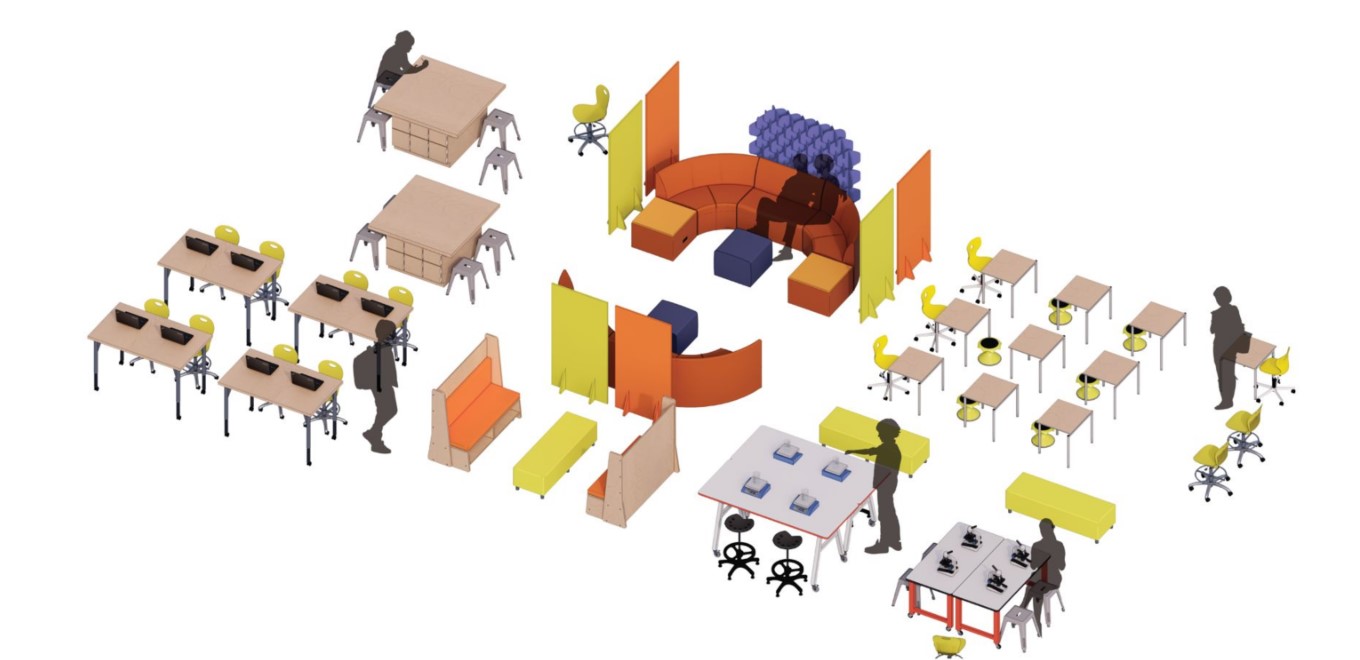
Forensic Technology Layout
Forensic Technology CTE programs typically have a heavy focus on learning how to gather and analyze evidence. Thus, the design for this layout features a work zone for gathering evidence, with an adjacent zone for analyzing evidence, divided by mobile acoustic partitions. Similar to Health & Medical Sciences, this design is based around a lounge grouping in the center, with a group workstation, collaboration area, and a presentation/teaching zone fit with modular furniture & acoustic panels, and finally, individual workstations with close proximity to the presentation zone.
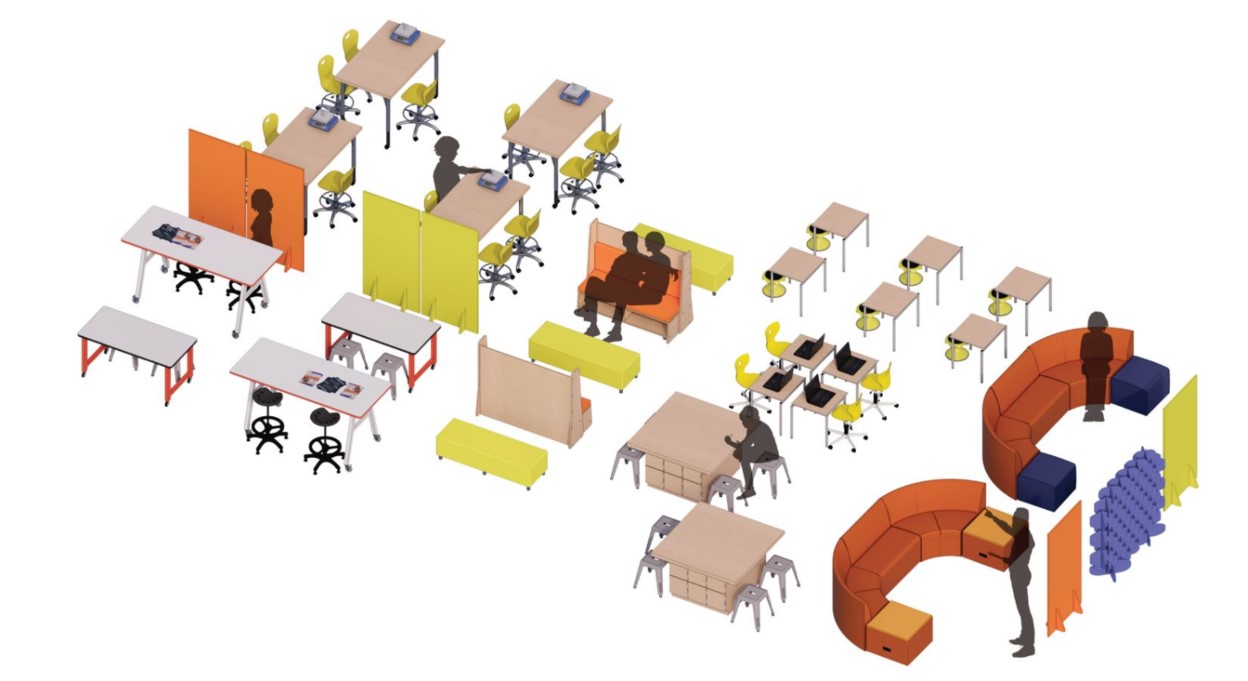
Culinary Arts & Sciences Layout
The Culinary Arts & Sciences Classroom required a more unique use of the space than a “traditional” classroom layout might. Specifically, it uniquely showcases how versatile the specified furniture can function for different programs. For this layout, the classroom features a linear demonstration & presentation zone, with adjacent stations for individual cooking, a collaborative prep area in the center of the classroom, and a lounge zone featuring booth seating, modular furniture, and a serving station in the middle.

Cosmetology Layout
Similar to Culinary Arts, the Cosmetology layout is quite different from the CTE programs above, and is another successful example of how our CTE classroom concept is flexible for various program types. This layout features a spacious reception and lounge & waiting area, as well as a small space for inventory and retail, a simulated salon alongside a hands-on learning zone, a space for teacher demonstrations, and finally, a library/study for students.
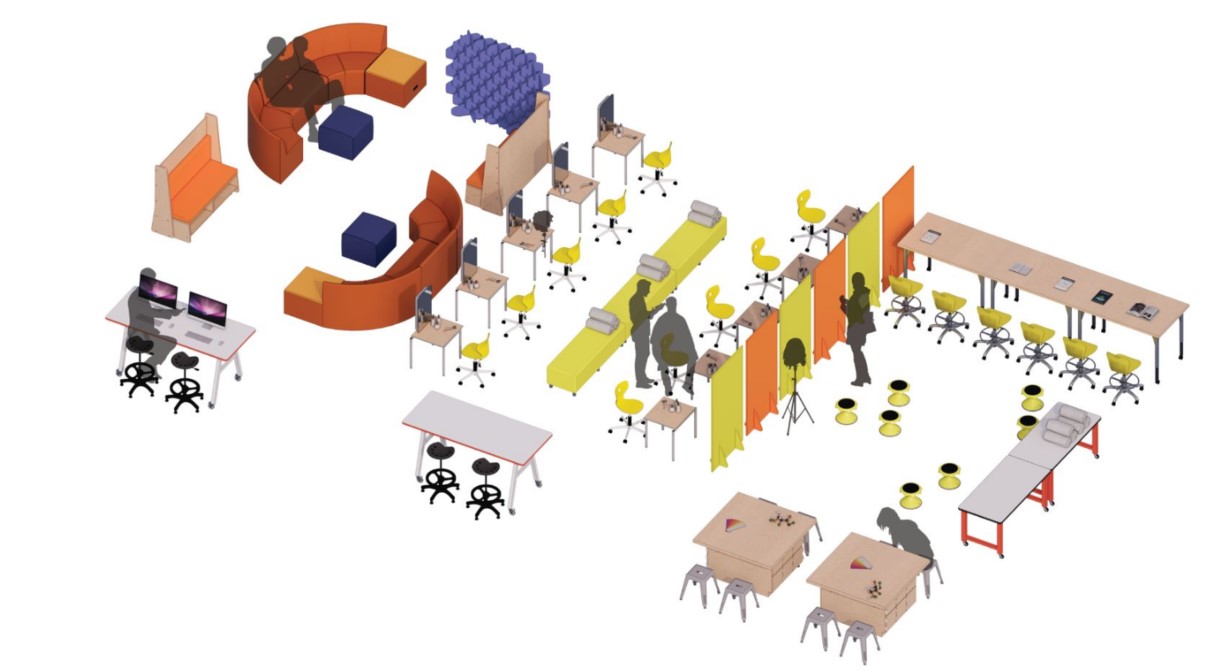
Through this EDspaces experience, the team gained valuable information pertaining to education design thinking, but also about CTE programs and how important they are in high school curriculums. It was especially informative to observe how inclusive, empathetic, and trauma-informed design can bring CTE programs to the next level for students and amplify their well-being. Along with this new knowledge, the team also gained connections within the industry, knowledge of inspiring furniture manufacturers that specialize in education/public sectors, various design thinking skills, and fresh perspectives on how spaces can be used. Once again, it was an absolute honor to participate in the conference through BKV’s support of the AIA Committee for Education. EDspaces 2023 was a truly valuable experience!
